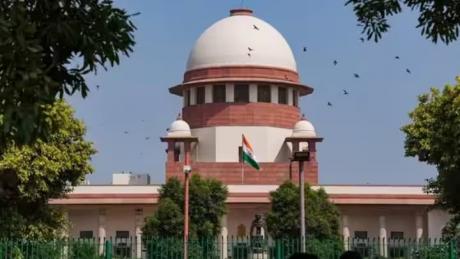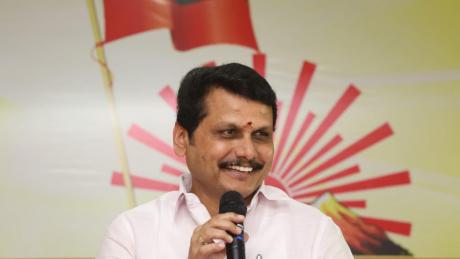India has given its maritime fleet a historical push as the country has welcomed the first indigenous aircraft carrier into its naval force, through which the on-blue battalion has taken a major leap. Named INS Vikrant, the carrier was commissioned by Prime Minister Narendra Modi on Friday - September 2 at an event that was held in Kochi, Kerala.
The mighty carrier was completely built at the Cochin Shipyard Limited in Kochi and it has empowered the capabilities of the Indian naval force. The aircraft carriers would normally be dubbed as Queen of the seas and with the induction of Vikrant, India has got its second queen while the first being INS Vikramaditya. In a first, INS Vikrant has come up with an extraordinary scale of features and India has now entered the club of a few nations that have equipped their naval fleet with domestically-built aircraft carriers.
Prime Minister Narendra Modi was joined by Union Defence Minister Rajnath Singh, Union Minister of Ports Sarbananda Sonowal, National Security Adviser Ajit Doval, Kerala Governor Arif Mohammed Khan and Kerala Chief Minister Pinarayi Vijayan during the event and after commissioning INS Vikrant, Modi said India has now joined the select club of nations that have developed indigenous aircraft carriers. Addressing the commissioning ceremony, Modi said, "INS Vikrant is a floating airfield, a floating town and the power generated in it can light up 5,000 houses, while the cables can run to Kashi from Kochi."
According to IANS, the Prime Minister said that the carrier's deck is the size of two football fields and it's an example of the government's aim to make India self-reliant even in the defence sector. The Prime Minister said that the security of the Indo-Pacific region is the country's priority, but in the past, it was ignored. Unveiling the new Naval Ensign, Modi said with the new ensign, India has shed its colonial past.
Modi said, "Indian Naval flags carried a sign of slavery which has been replaced with a new one inspired by Chhatrapati Shivaji Maharaj. The new Naval Ensign draws inspiration from the seal of the great Indian emperor Chhatrapati Shivaji Maharaj. It depicts steadfastness, the octagonal shape represents the eight directions symbolising the Navy's multi-directional reach."
Sharing his address on Twitter, Modi wrote, "INS Vikrant is an example of Government's thrust to making India's defence sector self-reliant." During his address, the Prime Minister further said, "INS Vikrant is not just a warship. It is a testament to the hard work, talent, influence, and commitment of 21st-century India." Speaking at the event, Defence Minister Rajnath Singh said, "As India is moving rapidly towards a $5t trillion economy, our share in global trade will increase in the coming times. If the share will increase, a large part of it will inevitably be through maritime routes. In such a situation, INS Vikrant will prove to be crucial to safeguard our security and economic interests."
About INS Vikrant
INS Vikrant is designed by the Indian Navy's in-house Warship Design Bureau (WDB) and built by Cochin Shipyard Limited, a public sector shipyard under the Ministry of Ports, Shipping & Waterways. Vikrant has been built with state-of-the-art automation features and is the largest ship ever built in the maritime history of India.
Vikrant is 262.5 meters long and 61.6 meters wide and displaces 43,000 tonnes. It has a maximum designed speed of 28 knots with an endurance of 7,500 nautical miles. The ship has around 2,200 compartments, designed for a crew of around 1,600 including women officers and sailors. The carrier is designed with a very high degree of automation for machinery operations, ship navigation, and survivability. INS Vikrant is equipped with the latest state-of-the-art equipment and systems.
It is capable of operating an air wing consisting of 30 aircraft comprising of MiG-29K fighter jets, Kamov - 31, and MH-60R multi-role helicopters, in addition to indigenously manufactured Advanced Light Helicopters and Light Combat Aircraft. Using a novel aircraft-operation mode known as Short Take-Off But Arrested Recovery, INS Vikrant is equipped with a ski-jump for launching aircraft and a set of arrester wires for their recovery onboard.
It has been reported that with 76% indigenous content, the construction of INS Vikrant has resulted in direct employment generation for over 2,000 employees of Cochin Shipyard Limited. In addition, it has resulted in indirect employment generation for approx 12,500 employees for over 550 OEMs (Original Equipment Manufacturers), sub-contractors, ancillary industries and over 100 MSMEs as well, thereby bolstering plough back effect on the economy.
INS Vikrant is an example of Government's thrust to making India's defence sector self-reliant. https://t.co/97GkAzZ3sk
— Narendra Modi (@narendramodi) September 2, 2022
Prime Minister Shri @narendramodi commissions India’s first indigenous aircraft carrier, INS Vikrant in Kochi.⁰⁰“INS Vikrant is not just a warship. It is a testament to the hard work, talent, influence and commitment of the 21st century India”: PM ⁰https://t.co/lm6c9IDPv4 pic.twitter.com/fMKxkHBdLK
— Rajnath Singh (@rajnathsingh) September 2, 2022
#WATCH | PM Narendra Modi commissions indigenous Aircraft Carrier IAC Vikrant, the largest & most complex warship ever built in India's maritime history, into the Indian Navy at a ceremony in Kochi, Kerala. #INSVikrant pic.twitter.com/8oiQN2AnMg
— ANI (@ANI) September 2, 2022









Comments